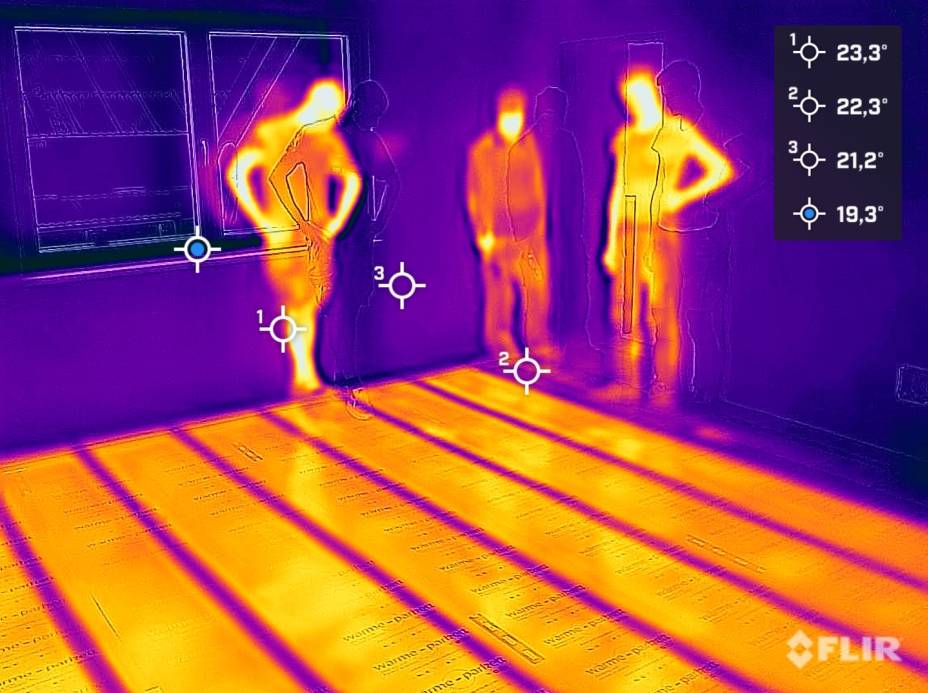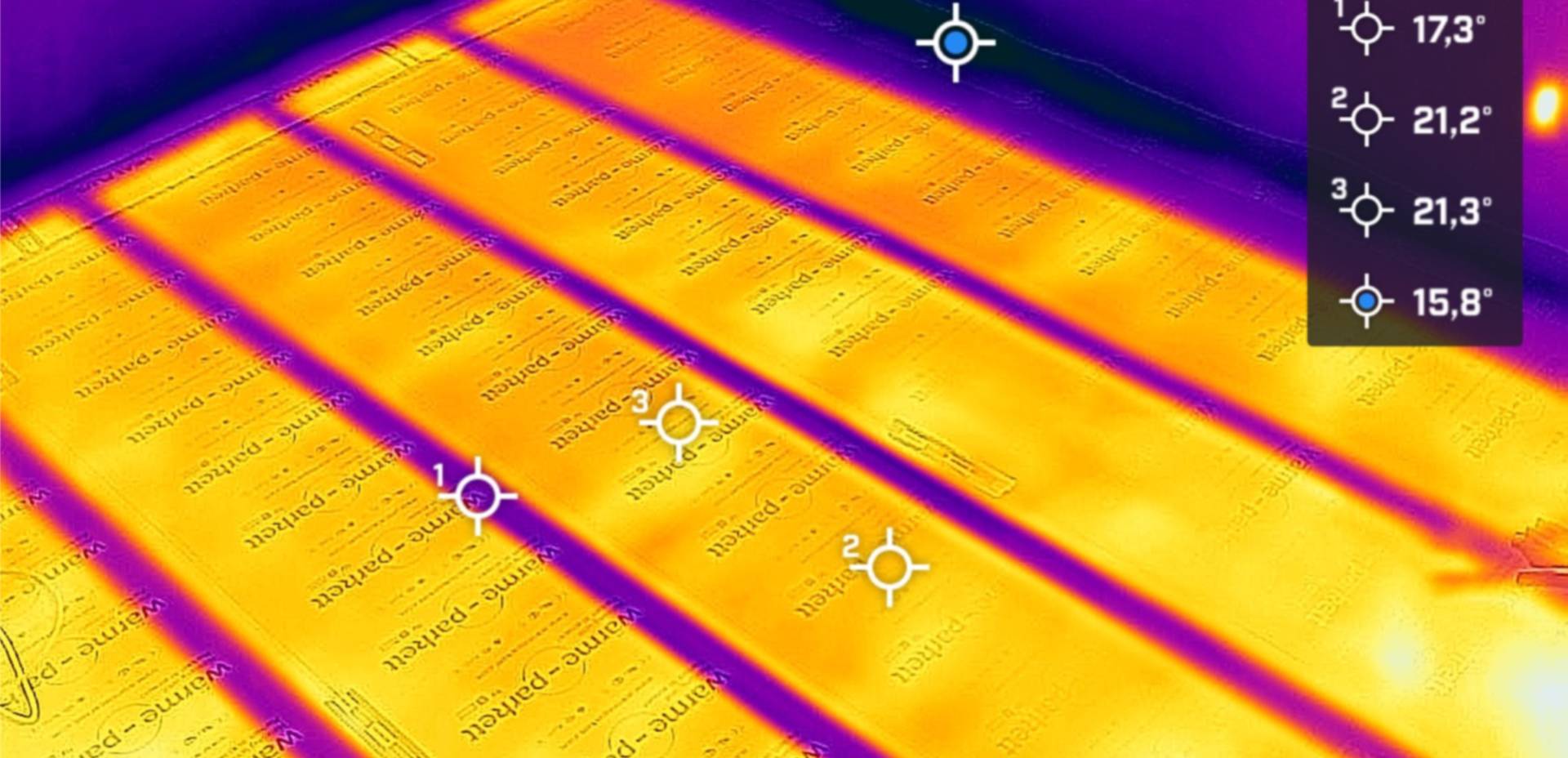
What is infrared heating?
Heating with infrared heat works via electromagnetic radiation that is not visible to the naked eye. Similar to the radiation of the sun: You can feel the heat all over your body, but you cannot see the radiation.
An infrared heater does not heat the air, but objects, surrounding building parts and people. This is the biggest difference to a conventional heating system where the air is heated (convection heat).
What types of radiation are there?
There are different types of infrared heating. The type depends on the wavelength that is emitted. At 3D-eHEAT we use a long-wave infrared heater, also called far infrared, or even shorter: FIR. These waves penetrate so deeply into your body that they have health benefits. There are also short and medium wave infrared heaters.
The types of radiation
-
Short-wave infrared
The infrared radiation of the short type can be recognised by its bright red-orange colour. This type of heat is found in a toaster, but is also used for patio heating, for example. This heat is super-intense and is therefore only used to heat people from a distance. If the distance to the heating element is too short, you risk getting burned.
-
Medium wave infrared
The medium type of infrared radiation can be recognised by its dark red colour. This heat is also intense, but you can enjoy it from a much shorter distance without risking burns. This type of heating is perfect for an infrared sauna, for example.
-
FIR: long-wave infrared
This is the type we use at 3D-eHEAT. It is suitable for heating the body directly. The radiation feels pleasant due to the optimal distribution on the skin and is the best way to heat the body locally. FIR warms the human body from the inside, so to speak, while the air remains cool.
And one step further...
Okay, we hope you now know a little more about the topic of infrared. Ready to delve a little deeper into the subject? That's exactly what FIR does. After it activates the molecules in your skin, the radiation penetrates even deeper, all the way to your muscles.
In concrete terms, you can think of it like this: The energy that penetrates the body causes the molecules to move, generating heat. As the relatively long wavelength passes directly through your skin - up to 4 cm deep - it slowly heats you from the inside out. Unlike conventional heaters, which don't penetrate far enough into your body and therefore only heat from the outside in.
Due to the connection of carbon fibres, the vibrations are generated in the deep infrared range. This immediately raises the temperature to a comfortable temperature.

Advantages of radiant heat
- The heat is perceived as very comfortable.
- The air in the room is gently heated and distributed, the humidity remains almost the same and there is hardly any turbulence in the air.
- The room air temperature is perceived to be higher with radiant heat than it actually is, as the heat is transferred directly to the body. The temperature in the room can be reduced by up to 2 °C. Each lowered degree saves about 6 % in heating costs per year.
- All surrounding components, furniture etc. have approximately the same surface temperature. This prevents mould from forming.
- When ventilating, a maximum of 10 % heat energy is lost, as the heat is primarily stored in the building fabric and not in the room air.
